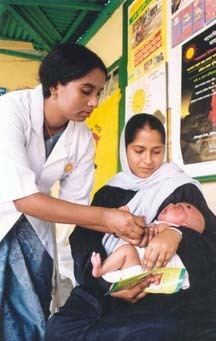 | ||
Cocooning, also known as the Cocoon Strategy, is a vaccination strategy that has been recommended by the Centers for Disease Control and Prevention (CDC) in the United States since 2006. It aims to protect newborn infants from becoming infected with pertussis by administering DTaP/Tdap (tetanus, diphtheria and acellular pertussis) booster vaccine to mothers, family members and any individuals who would come into regular contact with the newborn infant. By vaccinating these individuals with a pertussis booster a pool of persons is established around the newborn who are themselves protected from getting pertussis and passing it on to the infant, thereby creating a "cocoon" of protection around the newborn. Young infants have the highest rate of pertussis; in 87-100% of all deaths caused by pertussis, the victim is an infant of less than 6 months of age.
ACIP recommendations
Cocooning is defined as the strategy of protecting infants from infectious diseases, especially pertussis, by vaccinating those in close contact with them. The Advisory Committee on Immunization Practices (ACIP) has recommended cocooning with Tdap vaccine since 2005 and has continued to recommend this strategy for all those with expected close contact with infants. ACIP states that cocooning provides maximum protection to the infant beyond what is provided by maternal vaccination. ACIP is recommending that all relatives and caregivers get vaccinated against pertussis at least two weeks before coming into contact with infants.
